Development of Low-Viscosity UHPC Using Fly Ash Microbeads and Modified Polycarboxylic Acid Superplasticizer
Abstract
1. Introduction
2. Materials and Methods
2.1. Raw Materials
2.2. Mix Design
2.3. Test Method
2.3.1. Mechanical Properties of UHPC
2.3.2. Rheological Properties of UHPC Paste
2.3.3. Microstructure of UHPC
3. Results and Discussion
3.1. The Flowability of UHPC Paste
3.2. The Rheological Behavior of UHPC Paste
3.2.1. Effect of Fly Ash Microbeads on the Static Yield Stress
3.2.2. Effect of Fly Ash Microbeads on the Dynamic Yield Stress and Viscosity
3.2.3. Effect of JN-PCE on the Static Yield Stress
3.2.4. Effect of JN-PCE on the Dynamic Yield Stress and Viscosity
3.3. Mechanical Properties of UHPC
3.4. Microstructure Characterization of UHPC
4. Conclusions
- Either the sole use of JN-PCE or its combined application with fly ash microbeads can effectively guarantee the excellent flowability in UHPC.
- A low content of fly ash microbeads effectively reduces the static/dynamic yield stress of UHPC. However, a high content contributes less to regulating it.
- The modified JN-PCE exhibited superior water-reducing and viscosity-reducing performance and helped improve the mechanical properties of UHPC.
- The combined use of fly ash microbeads and JN-PCE can reduce the viscosity of UHPC and improve its compressive strength.
- Under the combined use of microbeads and JN-PCE, UHPC exhibited high hydration levels, minimal pores, and exceptional compactness. The microbeads and JN-PCE effectively regulated the fluidity of waste-based UHPC. This research on their dual effects on the rheological parameters of UHPC holds significant promise for the widespread promotion and application of UHPC on a larger scale.
Author Contributions
Funding
Data Availability Statement
Conflicts of Interest
Abbreviations
References
- Du, J.; Meng, W.; Khayat, K.H.; Bao, Y.; Guo, P.; Lyu, Z.; Abu-Obeidah, A.; Nassif, H.; Wang, H. New development of ultra-high-performance concrete (UHPC). Compos. Part B Eng. 2021, 224, 109220. [Google Scholar] [CrossRef]
- Yoo, D.-Y.; Banthia, N. Mechanical properties of ultra-high-performance fiber-reinforced concrete: A review. Cem. Concr. Compos. 2016, 73, 267–280. [Google Scholar] [CrossRef]
- Wang, C.; Yang, C.; Liu, F.; Wan, C.; Pu, X. Preparation of ultra-high performance concrete with common technology and materials. Cem. Concr. Compos. 2012, 34, 538–544. [Google Scholar] [CrossRef]
- Wille, K.; Boisvert-Cotulio, C. Material efficiency in the design of ultra-high performance concrete. Constr. Build. Mater. 2015, 86, 33–43. [Google Scholar] [CrossRef]
- Schmidt, M.; Fehling, E. Ultra-high-performance concrete: Research, development and application in Europe. ACI Spec. Publ. 2005, 228, 51–78. [Google Scholar]
- Yoo, D.-Y.; Yoon, Y.-S. A review on structural behavior, design, and application of ultra-high-performance fiber-reinforced concrete. Int. J. Concr. Struct. Mater. 2016, 10, 125–142. [Google Scholar] [CrossRef]
- Wallevik, O.H.; Wallevik, J.E. Rheology as a tool in concrete science: The use of rheography and workability boxes. Cem. Concr. Res. 2011, 41, 1279–1288. [Google Scholar] [CrossRef]
- Yan, P.; Li, M.; Han, J.; Zhao, X. Recent development on pumpability of fresh concrete. J. Chin. Ceram. Soc. 2018, 46, 239–246. [Google Scholar]
- Yu, S.; Sun, Z.; Qian, W.; Yu, J.; Yang, J. A meshless method for modeling the microscopic drying shrinkage cracking processes of concrete and its applications. Eng. Fract. Mech. 2022, 277, 109014. [Google Scholar] [CrossRef]
- Han, F.; Pu, S.; Zhou, Y.; Zhang, H.; Zhang, Z. Effect of ultrafine mineral admixtures on the rheological properties of fresh cement paste: A review. J. Build. Eng. 2022, 51, 104313. [Google Scholar] [CrossRef]
- Khayat, K.H.; Meng, W.; Vallurupalli, K.; Teng, L. Rheological properties of ultra-high-performance concrete—An overview. Cem. Concr. Res. 2019, 124, 105828. [Google Scholar] [CrossRef]
- Filazi, A.; Demir, I.; Sevim, O. Enhancement on mechanical and durability performances of binary cementitious systems by optimizing particle size distribution of fly ash. Arch. Civ. Mech. Eng. 2020, 20, 58. [Google Scholar] [CrossRef]
- Demir, I.; Filazi, A.; Sevim, O.; Simsek, O. Influence of freeze–thaw cycling on properties of cementitious systems doped with fly ash having optimized particle size distribution. Arch. Civ. Mech. Eng. 2022, 22, 189. [Google Scholar] [CrossRef]
- Jing, R.; Liu, Y.; Yan, P. Uncovering the effect of fly ash cenospheres on the macroscopic properties and microstructure of ultra high-performance concrete (UHPC). Constr. Build. Mater. 2021, 286, 122977. [Google Scholar] [CrossRef]
- Yang, T.; Zhu, H.; Zhang, Z.; Gao, X.; Zhang, C.; Wu, Q. Effect of fly ash microsphere on the rheology and microstructure of alkali-activated fly ash/slag pastes. Cem. Concr. Res. 2018, 109, 198–207. [Google Scholar] [CrossRef]
- Kwan, A.; Chen, J. Adding fly ash microsphere to improve packing density, flowability and strength of cement paste. Powder Technol. 2013, 234, 19–25. [Google Scholar] [CrossRef]
- Kwan, A.; Li, Y. Effects of fly ash microsphere on rheology, adhesiveness and strength of mortar. Constr. Build. Mater. 2013, 42, 137–145. [Google Scholar] [CrossRef]
- Han, J.G.; Bi, Y.; Li, M.Y.; Yang, P.Y. Effect of mineral and chemical admixtures on rheological parameters of binder paste. China Civ. Eng. J. 2021, 54, 55–63. [Google Scholar]
- Yu, R.; Zhou, F.; Yin, T.; Wang, Z.; Ding, M.; Liu, Z.; Leng, Y.; Gao, X.; Shui, Z. Uncovering the approach to develop ultra-high performance concrete (UHPC) with dense meso-structure based on rheological point of view: Experiments and modeling. Constr. Build. Mater. 2021, 271, 121500. [Google Scholar] [CrossRef]
- Feys, D.; Wallevik, J.E.; Yahia, A.; Khayat, K.H.; Wallevik, O.H. Extension of the Reiner–Riwlin equation to determine modified Bingham parameters measured in coaxial cylinders rheometers. Mater. Struct. 2013, 46, 289–311. [Google Scholar] [CrossRef]
- Lin, Y.; Yan, J.; Wang, Z.; Fan, F.; Zou, C. Effect of silica fumes on fluidity of UHPC: Experiments, influence mechanism and evaluation methods. Constr. Build. Mater. 2019, 210, 451–460. [Google Scholar] [CrossRef]
- Han, J.; Yao, B.; Yan, P.; Li, M.Y.; Liu, Y. The measurement of Bingham fluid rheological parameters by Couette rheometer. J. Chin. Ceram. Soc. 2021, 49, 323–330. [Google Scholar]
- Gao, J.; Sun, S.; Chen, K. Application of Micro-brad Powdered Coal Ash in Ultra-high Performance Concrete. Archit. Technol. 2014, 45, 26–29. [Google Scholar]
- Sun, Z.; Li, Z.; Pang, M.; Wu, L.; Ge, H. Slow-Release Effect of Polycarboxylate Superplasticizers with Various Functional Groups. J. Build. Mater. 2022, 25, 263–269. [Google Scholar]
- Li, Y.; Yang, C.; Zhang, Y.; Zheng, J.; Guo, H.; Lu, M. Study on dispersion, adsorption and flow retaining behaviors of cement mortars with TPEG-type polyether kind polycarboxylate superplasticizers. Constr. Build. Mater. 2014, 64, 324–332. [Google Scholar] [CrossRef]
- He, Y.; Zhang, X.; Zhang, Y.J.; Wang, Y.T. Adsorption and dispersing capability of polycarboxylate superplasticizers with various functional groups. J. Tongji Univ. 2017, 45, 244–248. [Google Scholar]
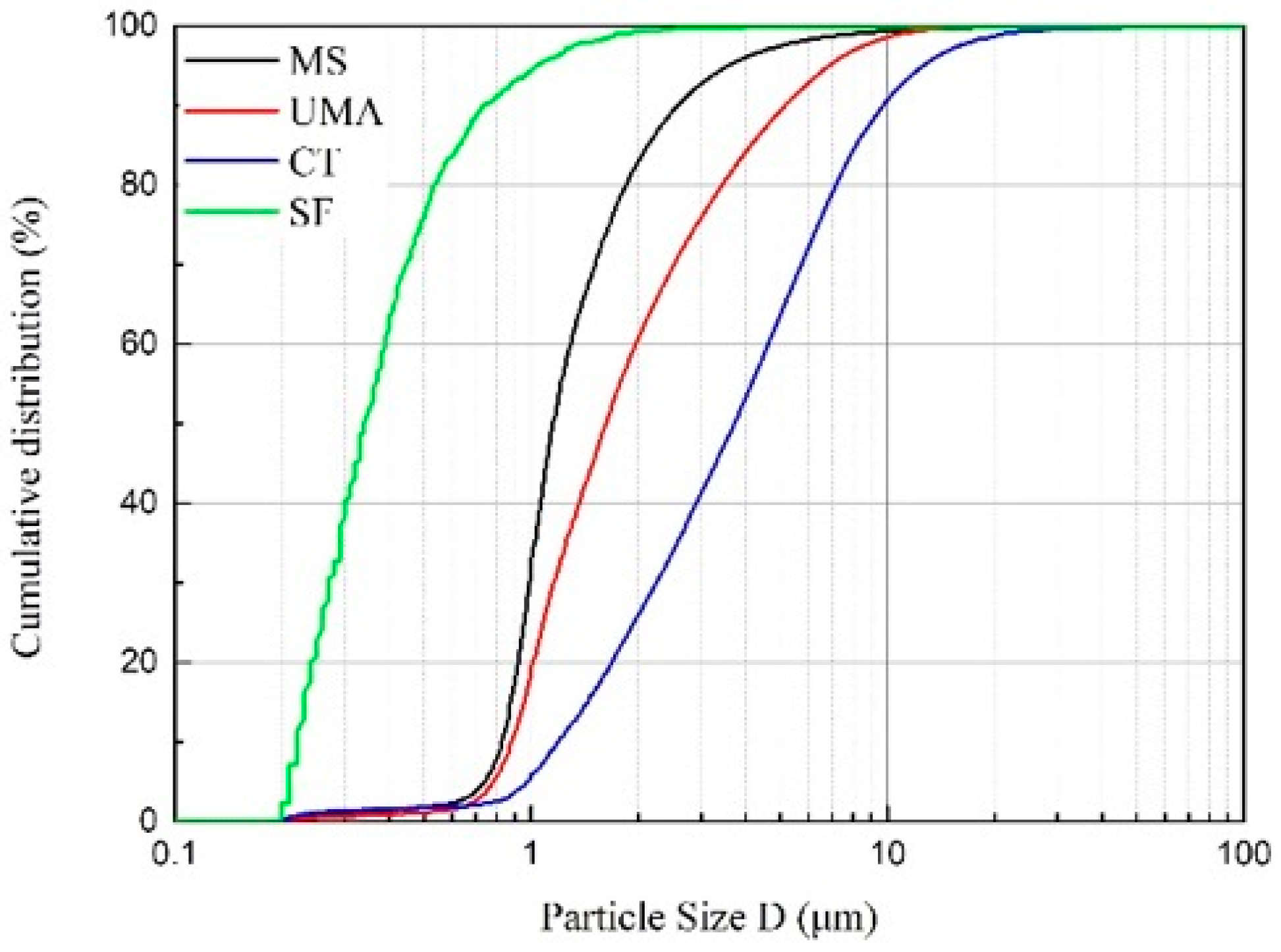
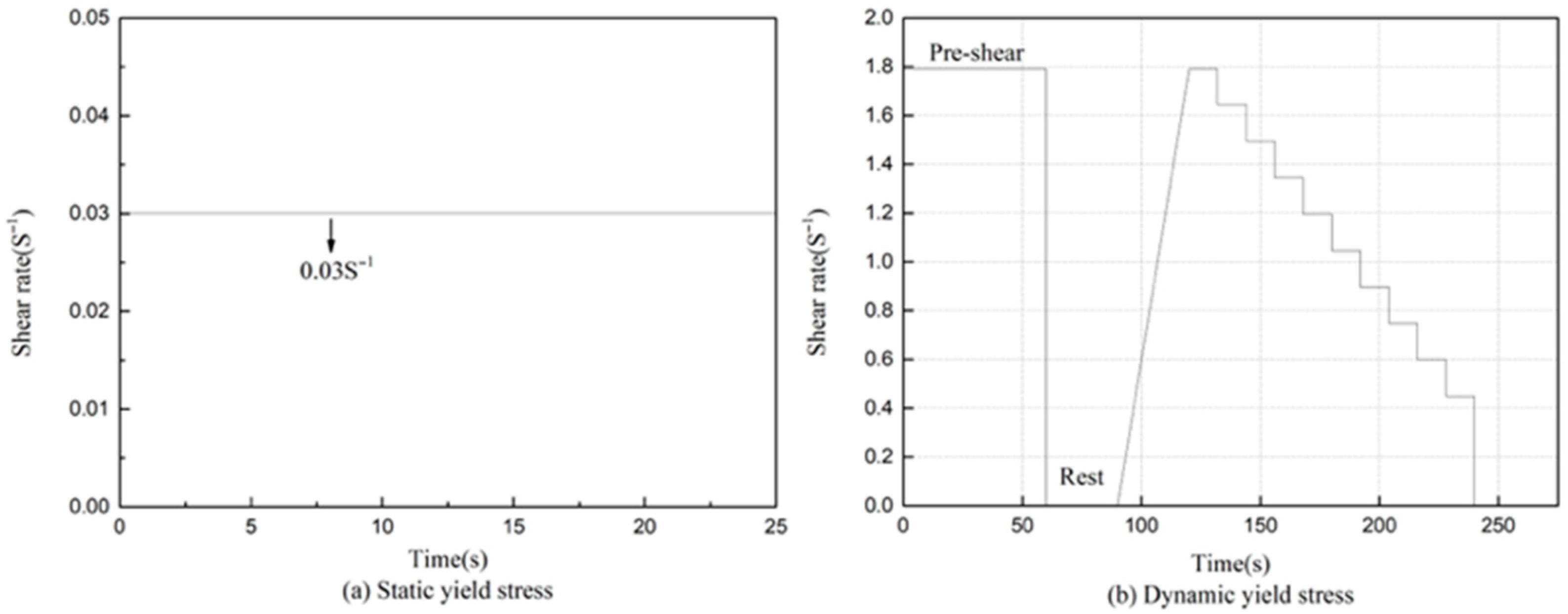
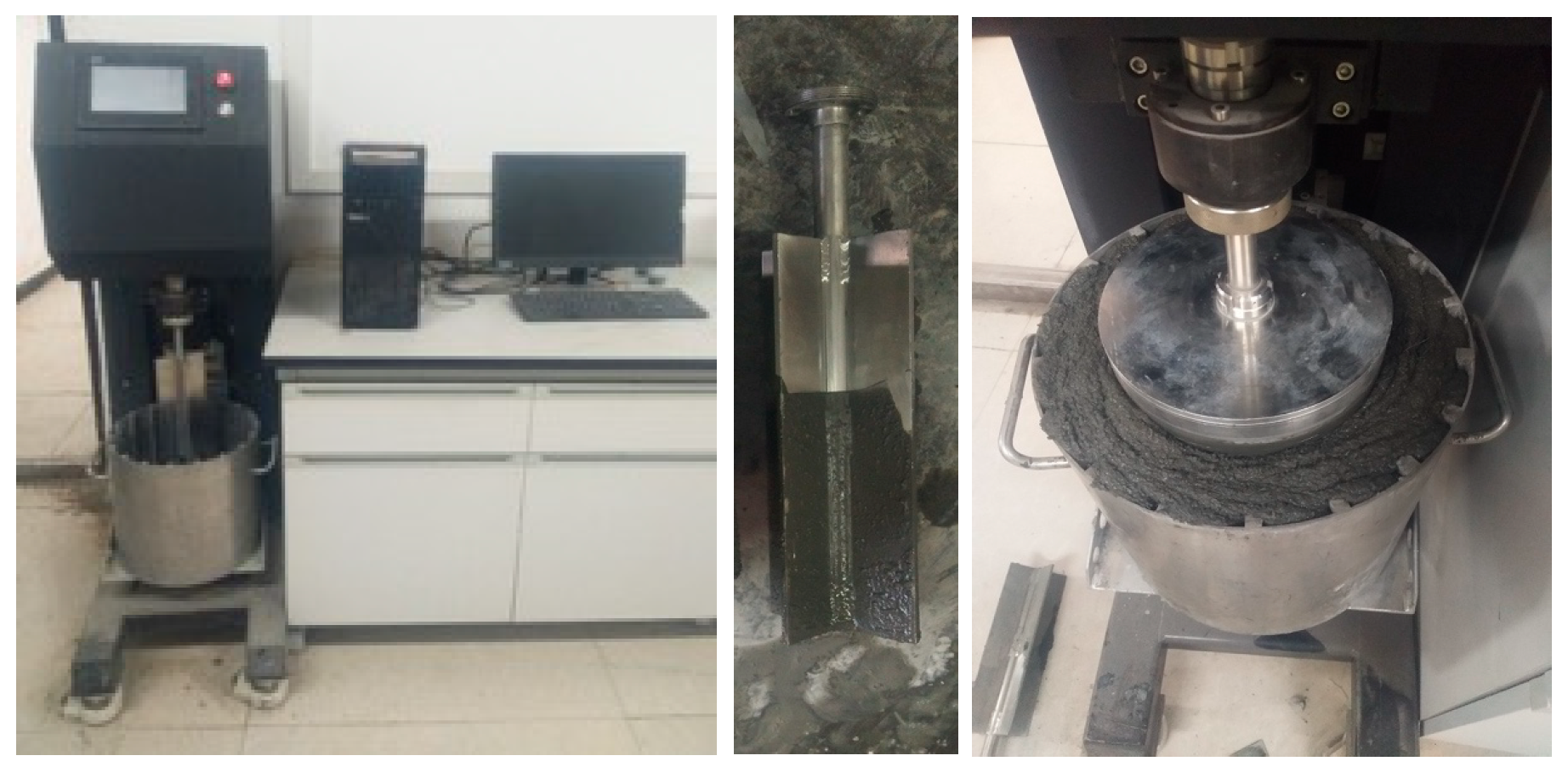
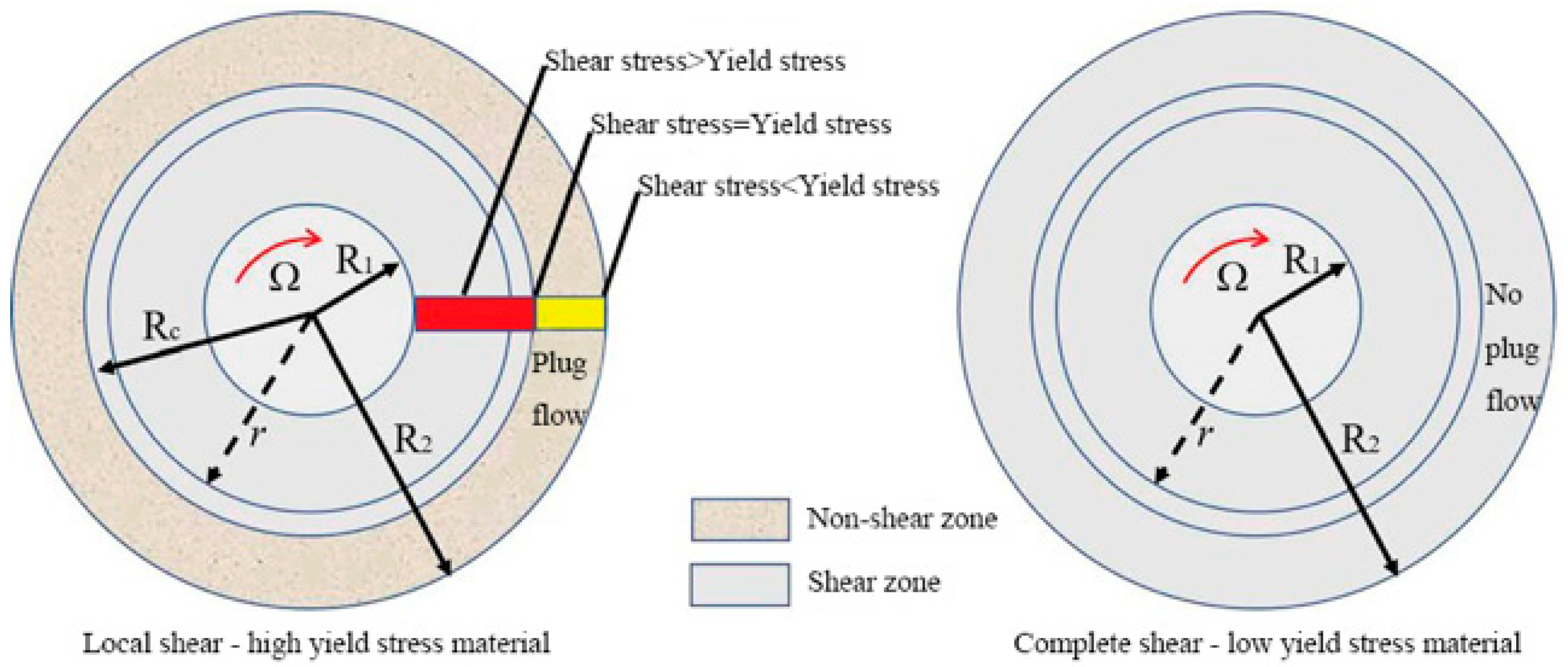
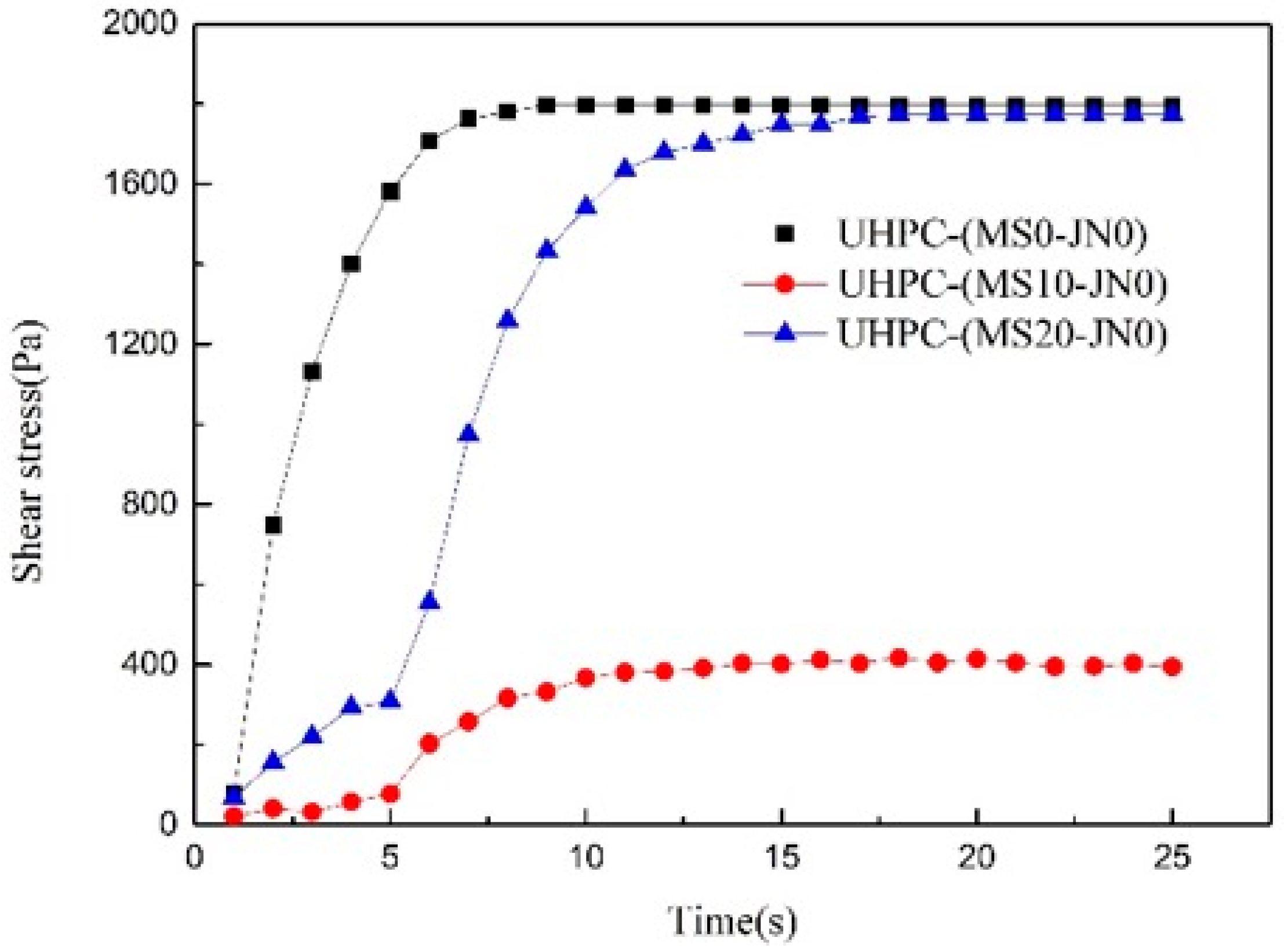
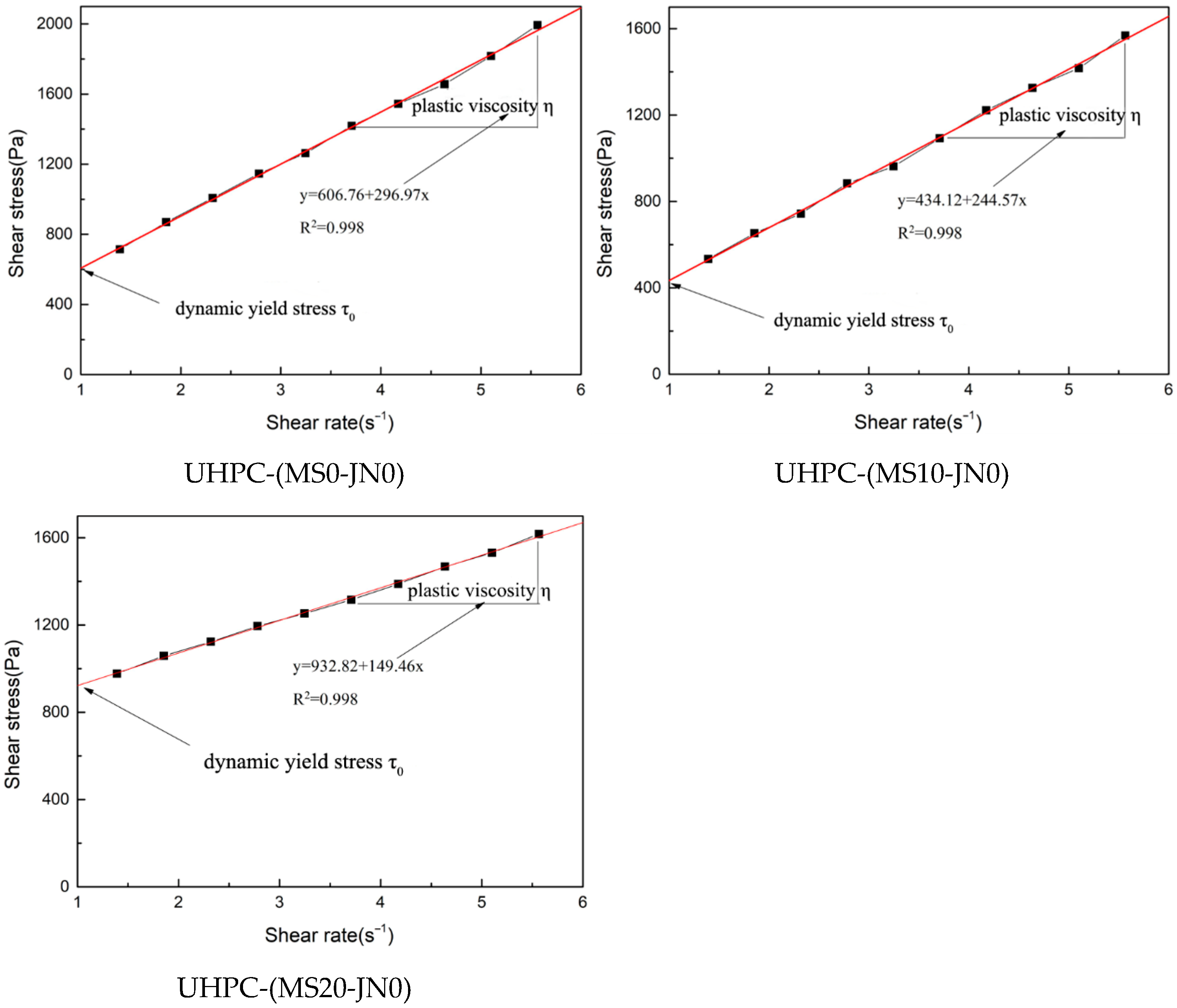

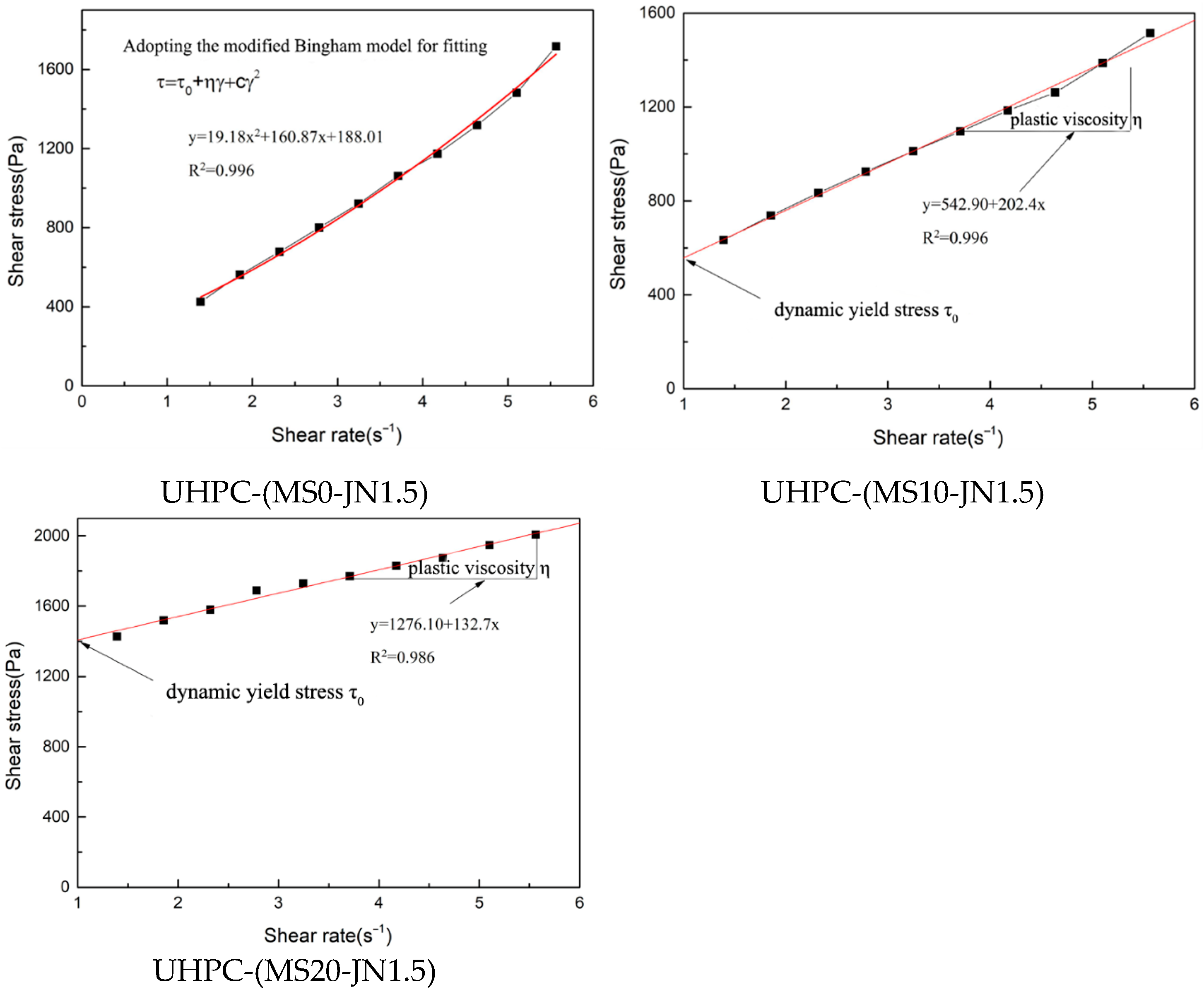
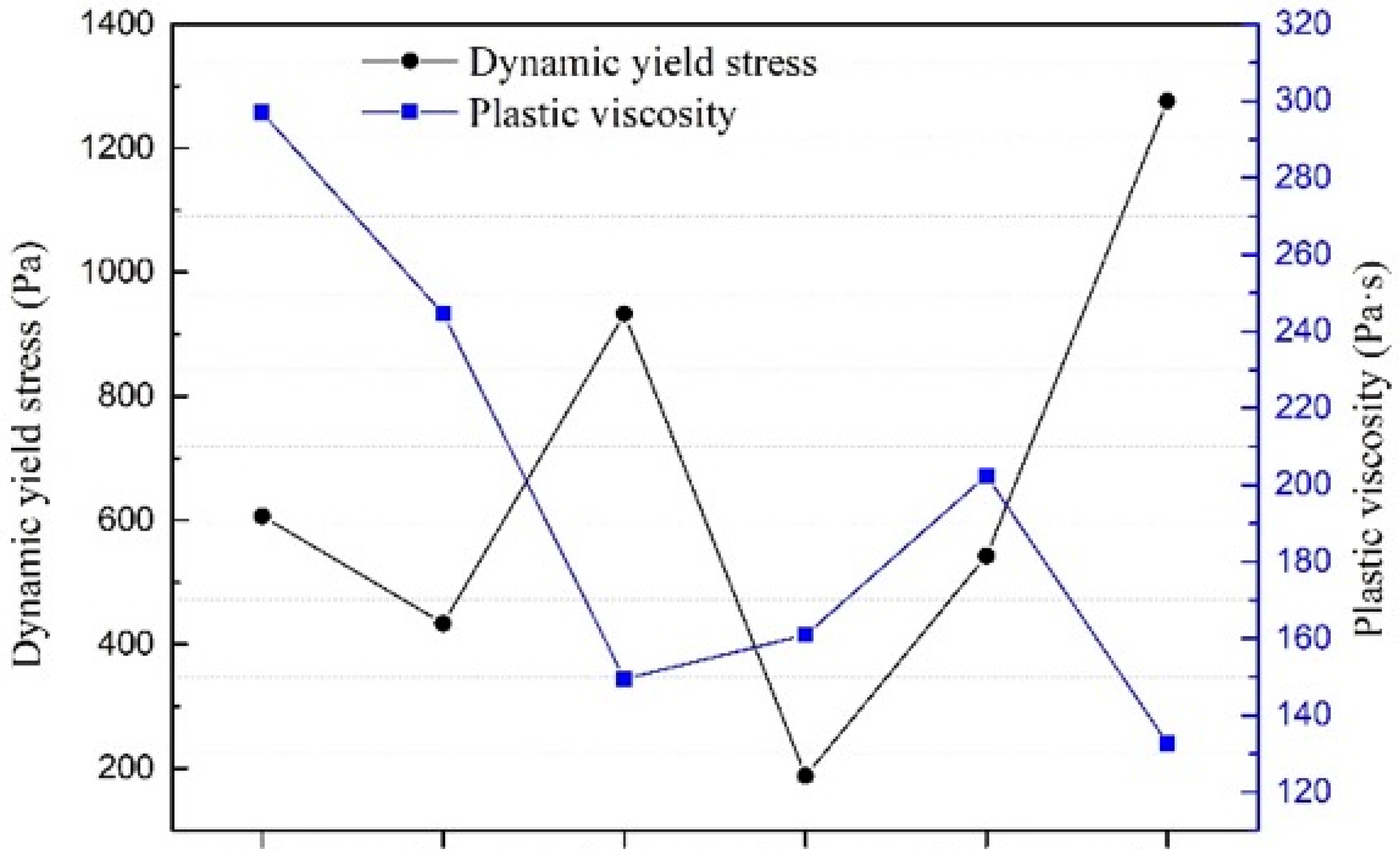
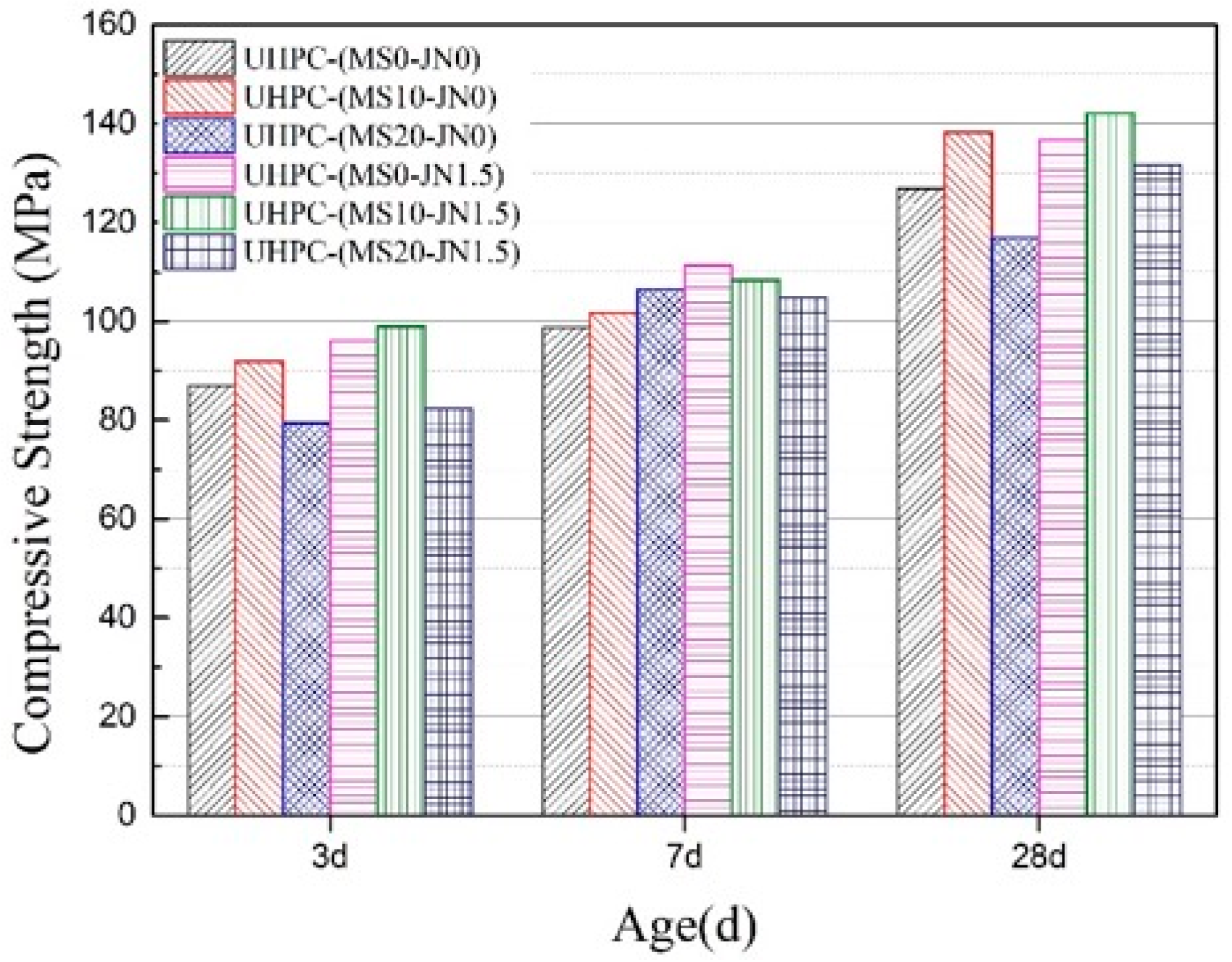
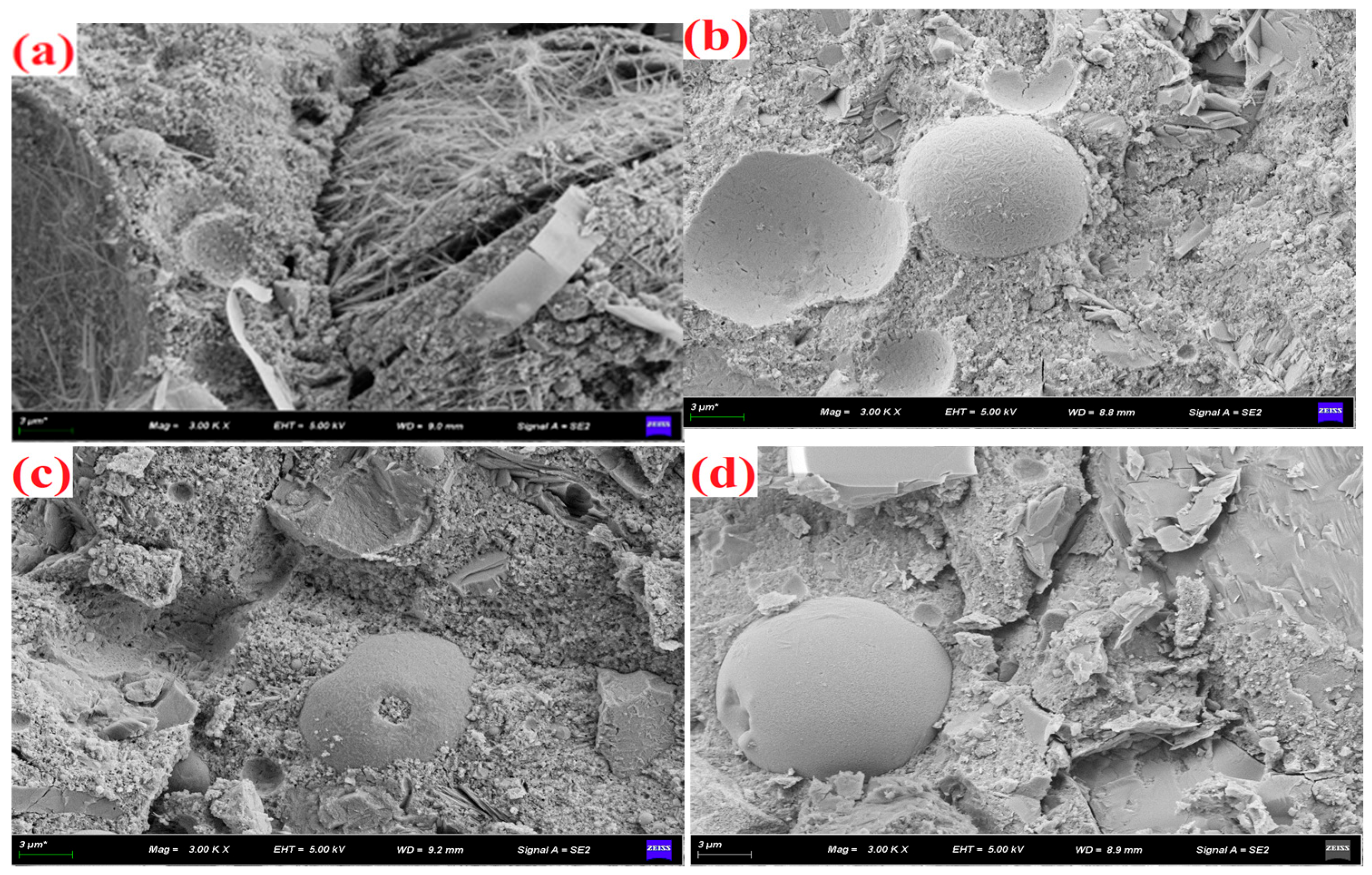
| Oxides (wt%) | Cement | UMA | SF | MS |
|---|---|---|---|---|
| Na2O | 0.56 | 0.61 | 0.07 | 1.26 |
| MgO | 2.15 | 2.77 | 1.05 | 0.97 |
| Al2O3 | 5.14 | 26.31 | 0.36 | 20.65 |
| SiO2 | 21.53 | 42.38 | 96.92 | 59.13 |
| SO3 | 3.34 | 1.77 | 0.69 | 0.13 |
| K2O | 1.21 | 1.63 | 0.32 | 2.34 |
| CaO | 59.99 | 8.86 | 0.3 | 7.23 |
| MnO | 0.07 | 6.93 | 0.01 | - |
| Fe2O3 | 4.57 | 5.95 | 0.08 | 5.22 |
| Loss (950 °C) | 4.63 | 1.65 | 2.80 | 0.86 |
| Specific surface area (m2/g) | 0.358 | 0.714 | - | 3.152 |
| Density (kg/m3) | 3.05 | 2.75 | - | 2.41 |
| Sample | CT (%) | SF/(%) | UMA/(%) | MS (%) | B/S | W/B | PCE/(%) | JN-PCE/(%) | Steel Fiber/ (Vol.%) |
|---|---|---|---|---|---|---|---|---|---|
| UHPC-(MS0-JN0) | 80 | 10 | 10 | 0 | 1.1 | 0.17 | 1.5 | / | 2 |
| UHPC-(MS10-JN0) | 70 | 10 | / | ||||||
| UHPC-(MS20-JN0) | 60 | 20 | / | ||||||
| UHPC-(MS0-JN1.5) | 80 | 0 | / | 1.5 | |||||
| UHPC-(MS10-JN1.5) | 70 | 10 | / | ||||||
| UHPC-(MS20-JN1.5) | 60 | 20 | / |
| Performance Indices | Performance Level | Technical Requirements |
|---|---|---|
| Slump expansion (mm) | SF1 | 550–655 |
| SF2 | 660–755 | |
| SF3 | 760–850 | |
| Spreading time T500 (s) | VS1 | ≥2 |
| VS2 | <2 |
| Test No. | Slump Expansion (mm) | Spreading Time (s) | Slump Depth (mm) | Free Fall Time (s) | Filling Property | |
|---|---|---|---|---|---|---|
| Slump Expansion Grading | Spreading Time Grading | |||||
| UHPC-(MS0-JN0) | 650 | 18 | 270 | 23 | SF1 | VS1 |
| UHPC-(MS10-JN0) | 560 | 24 | 280 | 29 | SF1 | VS1 |
| UHPC-(MS20-JN0) | 490 | 40 | 260 | 35 | - | VS1 |
| UHPC-(MS0-JN1.5) | 775 | 10 | 290 | 13 | SF2 | VS1 |
| UHPC-(MS10-JN1.5) | 730 | 12 | 290 | 17 | SF2 | VS1 |
| UHPC-(MS20-JN1.5) | 520 | 36 | 250 | 22 | - | VS1 |
| Test Number | Flexural Strength (MPa) | Compressive Strength (MPa) | ||||||||||
|---|---|---|---|---|---|---|---|---|---|---|---|---|
| 3d | 7d | 28d | 3d | 7d | 28 | |||||||
| μ | σ | μ | σ | μ | σ | μ | σ | μ | σ | μ | σ | |
| UHPC-(MS0-JN0) | 28.4 | 0.3 | 31.8 | 1.0 | 32.8 | 2.4 | 86.9 | 1.2 | 98.8 | 2.4 | 126.8 | 1.8 |
| UHPC-(MS10-JN0) | 31.7 | 1.5 | 32.2 | 1.3 | 35.2 | 2.1 | 91.9 | 0.5 | 101.6 | 1.7 | 138.2 | 2.4 |
| UHPC-(MS20-JN0) | 27.7 | 1.7 | 28.7 | 1.1 | 29.3 | 1.7 | 79.4 | 1.4 | 106.5 | 3.6 | 116.9 | 2.2 |
| UHPC-(MS0-JN1.5) | 28.2 | 0.6 | 29.6 | 0.7 | 30.8 | 1.9 | 96.0 | 1.9 | 111.3 | 0.8 | 136.6 | 1.5 |
| UHPC-(MS10-JN1.5) | 23.6 | 2.3 | 26.1 | 1.6 | 31.4 | 2.0 | 98.9 | 1.6 | 108.3 | 1.3 | 142.1 | 2.7 |
| UHPC-(MS20-JN1.5) | 22.7 | 2.6 | 23.2 | 1.7 | 27.5 | 1.2 | 82.3 | 2.8 | 104.8 | 1.5 | 131.6 | 1.6 |
Disclaimer/Publisher’s Note: The statements, opinions and data contained in all publications are solely those of the individual author(s) and contributor(s) and not of MDPI and/or the editor(s). MDPI and/or the editor(s) disclaim responsibility for any injury to people or property resulting from any ideas, methods, instructions or products referred to in the content. |
© 2025 by the authors. Licensee MDPI, Basel, Switzerland. This article is an open access article distributed under the terms and conditions of the Creative Commons Attribution (CC BY) license (https://creativecommons.org/licenses/by/4.0/).
Share and Cite
Li, L.; Ming, Y.; Ma, Z.; Qu, X.; Chen, F.; Sun, Y.; Zhang, G.; Li, H. Development of Low-Viscosity UHPC Using Fly Ash Microbeads and Modified Polycarboxylic Acid Superplasticizer. Buildings 2025, 15, 3081. https://doi.org/10.3390/buildings15173081
Li L, Ming Y, Ma Z, Qu X, Chen F, Sun Y, Zhang G, Li H. Development of Low-Viscosity UHPC Using Fly Ash Microbeads and Modified Polycarboxylic Acid Superplasticizer. Buildings. 2025; 15(17):3081. https://doi.org/10.3390/buildings15173081
Chicago/Turabian StyleLi, Ling, Yang Ming, Zhaolin Ma, Xinming Qu, Feixiang Chen, Yang Sun, Guozhi Zhang, and Hang Li. 2025. "Development of Low-Viscosity UHPC Using Fly Ash Microbeads and Modified Polycarboxylic Acid Superplasticizer" Buildings 15, no. 17: 3081. https://doi.org/10.3390/buildings15173081
APA StyleLi, L., Ming, Y., Ma, Z., Qu, X., Chen, F., Sun, Y., Zhang, G., & Li, H. (2025). Development of Low-Viscosity UHPC Using Fly Ash Microbeads and Modified Polycarboxylic Acid Superplasticizer. Buildings, 15(17), 3081. https://doi.org/10.3390/buildings15173081






